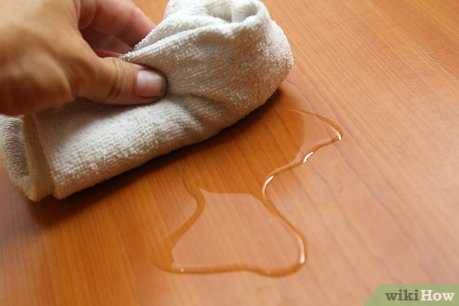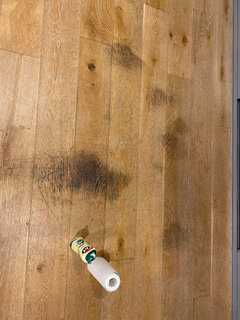



To tackle unwanted odors from hardwood surfaces, mix equal parts of white vinegar and water in a spray bottle. Apply the solution directly to the affected area, ensuring it doesn’t saturate the wood. Wipe it up with a clean cloth after a few minutes to lift the scent away.
For stubborn remnants, create a paste using baking soda and water. Spread this mixture over the area and let it sit for several hours or overnight. The baking soda will absorb the lingering odors effectively. Afterward, vacuum or sweep away the residue.
Consider using enzymatic cleaners specifically designed for organic stains. These products break down the source of the odor, providing a thorough clean. Follow the manufacturer’s instructions for optimal results, and allow the product to sit for the recommended time before rinsing or wiping away.
Lastly, maintaining good ventilation in the area can help dissipate any remaining odors. Open windows or use fans to circulate fresh air, which can aid in the overall freshness of your living space.
Tips for Removing Odors from Hard Surfaces
Mix equal parts of white vinegar and water in a spray bottle. Lightly mist the affected area and allow it to sit for about 5-10 minutes. Wipe with a soft cloth to remove residue.
Enzymatic Cleaners
Look for enzymatic solutions designed for pet messes. Apply as per the instructions on the label. These products break down odor-causing compounds effectively.
Baking Soda Treatment
Sprinkle baking soda generously over the area. Let it sit for several hours or overnight. Vacuum up the baking soda to absorb lingering odors.
Always ensure thorough drying of the surface after cleaning to prevent any moisture from seeping into the materials.
Identify the Affected Areas on the Floor
First, use your nose to pinpoint where the unpleasant scent lingers. Get down low and sniff around, checking corners and edges. You might find spots near furniture or in hidden spaces; these are common areas where accidents happen.
Next, examine the floor visually for any discoloration or stains. Look for yellowish spots that might indicate where the issue lies. Pay attention to areas around litter boxes or favorite resting spots.
Consider using a black light in dark conditions. This tool can reveal hidden markings that aren’t visible in regular light. Move slowly and scan the entire surface to ensure no area is overlooked.
After identifying the targeted zones, mark them with painter’s tape or sticky notes. This way, you can keep track of where to focus your cleaning efforts. Thorough inspection helps in addressing the problem more effectively, ensuring a cleaner and fresher environment.
Choose the Right Cleaning Solution for Wood

For tackling the issue on hardwood surfaces, selecting an appropriate cleaning agent is fundamental. My top recommendation is to use enzymatic cleaners specifically designed for organic stains. These products break down the compounds causing lingering odors.
Recommended Products
- Look for enzymatic solutions that are safe for hardwood. Brands like Nature’s Miracle and Rocco & Roxie are popular choices.
- Avoid harsh chemicals, as they can damage the finish of your flooring.
- Test any new cleaner on a small, inconspicuous area to ensure it does not affect the wood’s appearance.
Additional Tips
- Mix the cleaner with water as per the instructions for optimal results.
- Use a soft cloth or mop to apply the solution; avoid excessive moisture.
- After cleaning, ensure the area is well-ventilated to help with drying and odor elimination.
For those managing pet care, consider checking out this wound spray for cats for additional care. Nutrition also plays a role in your pet’s health; you might find the best acana dog food for boxers beneficial.
Prepare the Floor for Cleaning

Before tackling the issue, make sure to clear the area. Move any furniture, rugs, or decorative items away from the affected spots. This will allow for thorough access to the surface needing attention.
Gather Necessary Tools
- Soft cloths or paper towels
- A bucket for mixing solutions
- Spray bottle for easier application
- Protective gloves to keep my paws safe
Assess the Damage
Look closely at the surface for any discoloration or damage. If the finish is compromised, consider light sanding before cleaning. This might help restore the original appearance.
Ensure the area is free from any debris or dust. A clean surface helps the cleaning solution work better. Wipe the floor gently with a damp cloth to remove loose particles.
Once the area is prepped, I’m ready to move on to selecting the best cleaning agent for the job. Happy cleaning!
Apply the Cleaning Solution Correctly
Apply the cleaning mixture directly onto the affected areas using a spray bottle or a cloth. Avoid soaking the surface; just dampen it enough to break down the residue. Start from the edges of the stain and work inward to prevent spreading. Gently scrub with a soft brush or cloth to ensure the solution penetrates the finish and reaches the underlying layers. Rinse the area with clean water afterward to remove any leftover cleaner, wiping it dry with a towel.
For persistent spots, allow the solution to sit for several minutes before scrubbing. This extra time helps dissolve stubborn odors. After treatment, ventilate the room well to aid in drying and to eliminate any remaining odors. Regularly check the surface for any signs of moisture; excessive dampness can damage the finish.
Neutralize Remaining Odors After Cleaning
After tackling the initial cleaning, it’s crucial to address any lingering scents. Baking soda is a powerful ally; sprinkle it generously over the treated area. Let it sit for several hours or overnight to absorb any remaining odors.
Vinegar is another effective agent. Mix equal parts of water and vinegar in a spray bottle and lightly mist the surface. Avoid soaking the area; just a fine mist will do. Vinegar’s natural properties help neutralize odors without damaging the finish.
Activated charcoal can also be beneficial. Place bowls of activated charcoal around the area for several days. This will trap any stubborn odors in the air and help freshen the environment.
| Method | Application | Duration |
|---|---|---|
| Baking Soda | Sprinkle and leave | Several hours or overnight |
| Vinegar Solution | Light mist on surface | Allow to air dry |
| Activated Charcoal | Place in bowls around area | Several days |
Lastly, ensure proper ventilation in the space. Open windows and use fans to circulate air. Fresh air can significantly help in dissipating any remaining scents.
Prevent Future Incidents on Wood Floors
Invest in high-quality litter boxes. Choose ones that are easy to clean and have high sides to minimize spills. Regularly scoop out waste to keep the area inviting for me.
Consider placing multiple litter boxes in different areas of the house. This gives me options and reduces the chance of accidents if one box is too far away.
Encourage Good Habits
Reward me for using the litter box correctly. Positive reinforcement with treats or affection can motivate me to keep using it effectively.
Monitor My Health
Keep an eye on my behavior. Sudden changes in my bathroom habits might indicate health issues. A visit to the vet can ensure I stay healthy and avoid unpleasant situations.








